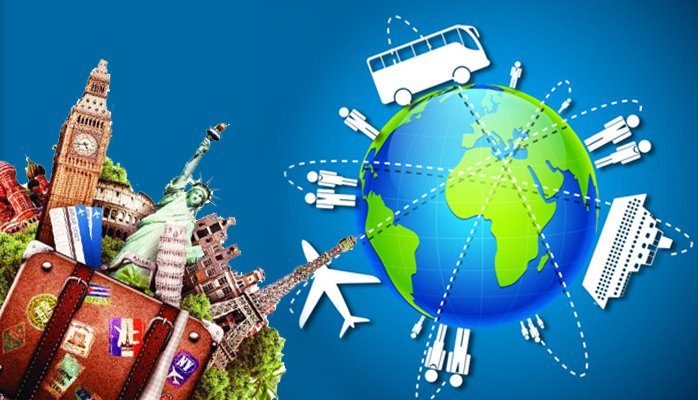Late last week, the Trump administration announced yet another round of changes to its policies surrounding travel to Cuba, ending flights between the United States and all cities on the Caribbean island other than Havana.
Though some publications have described the new measure as having only a minor impact, the reality is that the ramifications of the latest changes are far more nuanced and far-reaching than the mere reshuffling it will trigger for airlines currently flying to cities all over the island.
As a result of the new policy, airlines will have a 45-day period to wind down flights to non-Havana destinations in Cuba, which currently includes Santiago, Varadero and Santa Clara, among others.
Those who will be most significantly impacted by the lack of flights are Cubans and their family members in the United States because it is visiting family members who most predominantly rely upon the routes to destinations beyond Havana.
In addition, during an interview with TravelPulse, executives from the Center for Responsible Travel (CREST) said the discontinued flights will negatively impact Cuba’s blossoming “decentralized, small-scale, sustainable, tourism economy” or its small business eco-system.
In other words, the people around the island who operate casa particulars, provincial hotels, small tour companies, restaurants and more, all of which support robust local economies.
“The administration’s latest changes will have a kind of destabilizing effect on local economies by not allowing access for people to come in and out of various provinces,” CREST Executive Director Gregory Miller told TravelPulse.
“Restricting access for Cuban Americans and other tourists coming down for support for the Cuban people tours and other educational opportunities beyond Havana puts a serious limitation on the feeding and nurturing of the decentralized, small-scale tourism economy,” Miller added.
If visiting family members or tourists can’t get to the provinces there will start to be a snowballing negative effect on the local economies and local entrepreneurs, Miller continued.
“It hinders the potential of the destinations outside of Havana to develop,” added Rebekah Stewart, CREST’s director of communications.
CREST, for example, has been working with a provincial university in Holguin on expanding small-scale tourism in Holguin province. But the end of direct American flights to Holguin will be devastating for such efforts.
“It really does make a difference having that flight available,” said Stewart. “Holguin is a more than 10-hour drive from Havana. Being able to fly direct from Miami certainly makes a difference when people have limited time.”
While there are domestic Cuban airlines that fly from Havana to such places as Holguin, Stewart noted that U.S. citizens are not allowed to fly on one of those airlines, Aerogaviota.
To be clear, however, travel to the island by Americans will continue and for American tourists who simply want to visit Havana, there will be no impact at all stemming from the latest changes. Any initial predictions to the contrary have the potential to do great harm to Cuba and its travel industry, says David Lee, founder of Cultural Cuba, a company that has been seamlessly offering tours under the support for the Cuban people guidelines since 2011.
“I absolutely agree that banning flights will be very inconvenient, especially for visiting families there, I’m definitely not a fan of this latest misguided restriction by the current administration,” Lee began. “But it does not affect the vast majority of Americans who want to visit Cuba.”
According to Lee, well more than 95 percent or perhaps as much as 98 percent of American visitors to the island fly in and out of Havana and those flights have not been impacted by the latest policy changes.
If Americans begin to believe otherwise, however, confused by yet another round of negative headlines, it will be more than just the provinces impacted by the new policy changes.
“We’ve seen this time and time again. Every time the administration comes out with some new message or restriction it’s blown out of proportion,” said Lee. “People just assume Cuba travel is out of the question. That’s exactly what happened when the administration got rid of the people to people travel category in June.”
This summer, the administration issued a ban on people to people travel, which is the most common way Americans had visited the island, leaving primarily the support for the Cuban people tours as the allowable method for tourists seeking to explore the island. The administration also put a stop to all cruises visiting the country, which had been a boon for the small island nation, bringing in some 800,000 travelers last year who had plenty of money to spend.
The flurry of news headlines surrounding those changes left Americans unclear about how to visit the island and as a result, caused severe damage to the tourist economy.
The National Office of Statistics and Information of Cuba released data showing that there was a sharp decline in tourism activity to the Caribbean island in June, which local officials said was a direct result of the sanctions imposed by the Trump administration.
The good news is that visitation has steadily improved since then, said Lee.
“We’ve bounced back, not just for myself, but for a lot of other destination managers, we are having the biggest December and January and Americans are visiting,” said Lee.
“This concept of support for Cuban people travel is not bad. If it’s done right it makes sure the vast majority of money spent goes to the Cuban people. That concept is good. The key is we don’t want this latest thing to cause people to think that they can’t go to Cuba, which is totally not true” Lee added.
For Cuba’s provinces, however, even the ongoing support for the Cuban people travel category will cease to be much of a lifeline as a result of the latest changes.
“This is really going to be quite counterproductive. It’s almost going to be like arrested development,” said Miller, of CREST. “It’s going to suspend a fragile balance that has been developed. This is a big disruption that will limit continued, small-scale, economic development.” (https://www.travelpulse.com/news/destinations/tour-operators-react-to-latest-cuba-travel-crackdown.html)






































